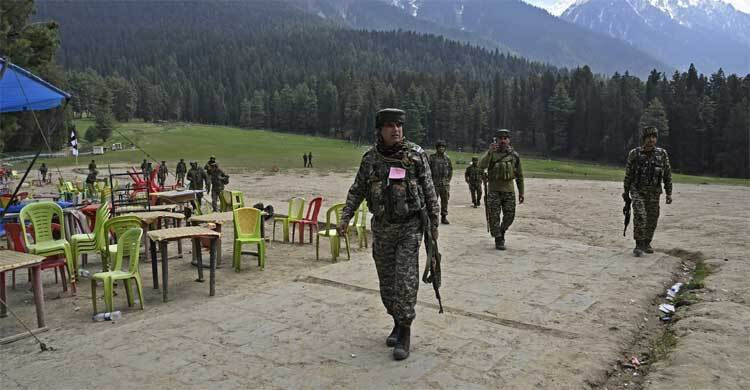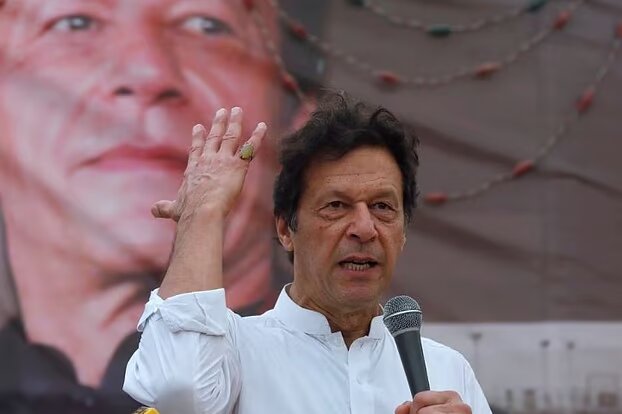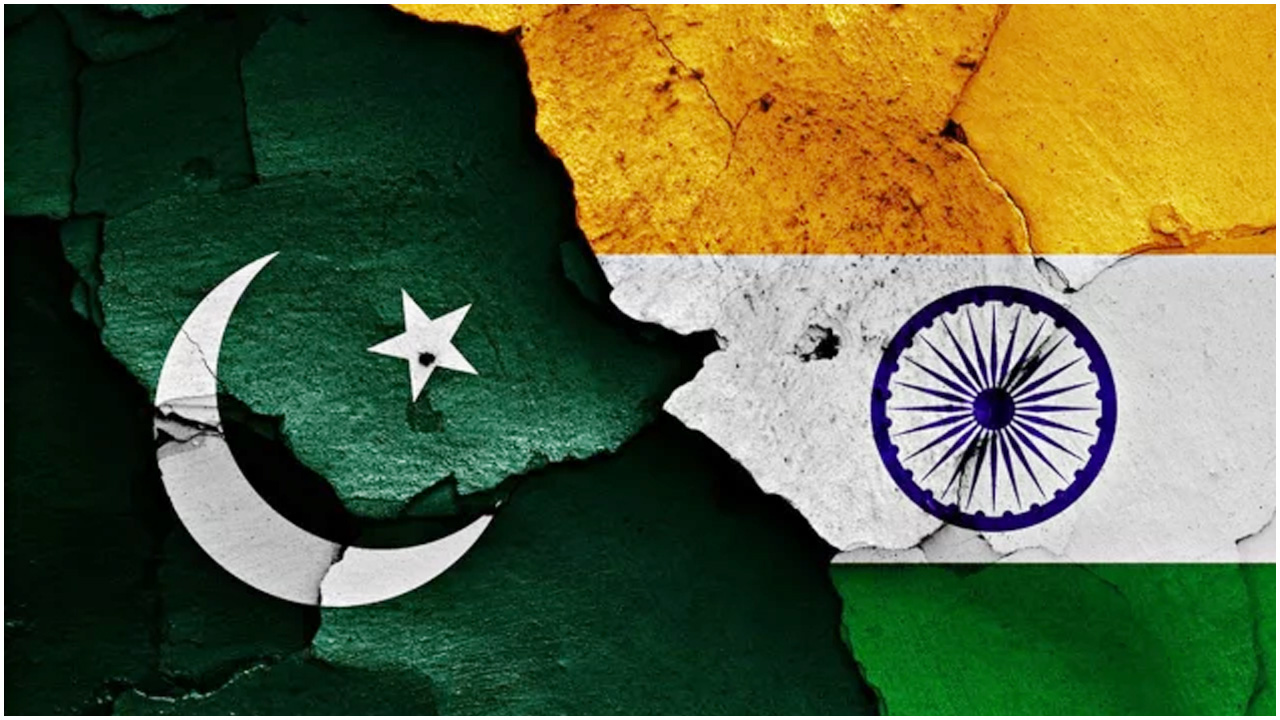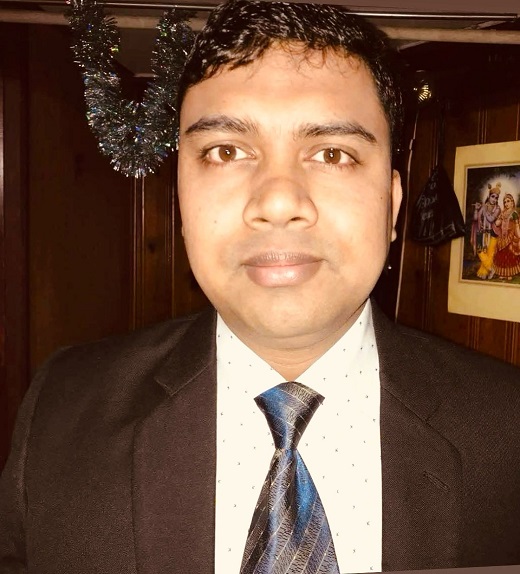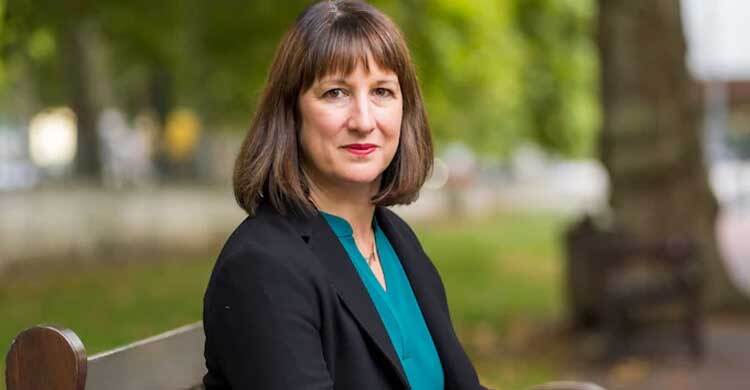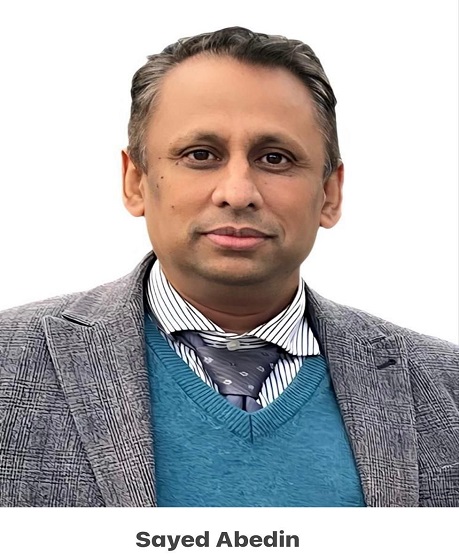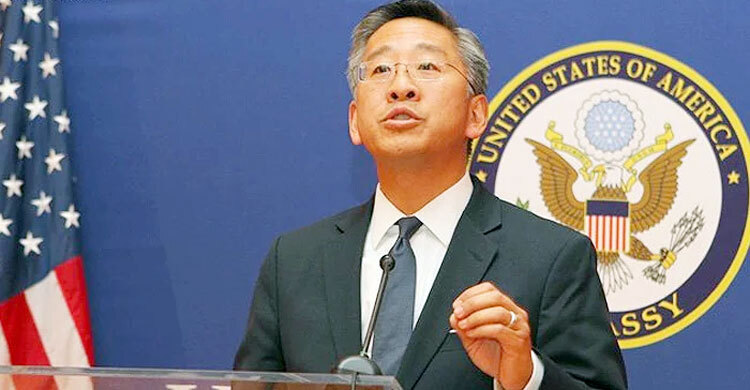
The Sanatan Dharma (Concepts and Spiritualism): Shree Rajkumar Saha
Shree Rajkumar Saha:
The Sanatan Dharma
(Concepts and Spiritualism)
Before writing about Sanatan Dharma (the Hindu religion), I offer my respectful obeisance to my
spiritual teacher with the following sloka:
oṁ ajñāna-timirāndhasya jñānāñjana-śalākayā
cakṣur unmīlitaṁ yena tasmai śrī-gurave namaḥ
Meaning: I was born in the darkest region of ignorance, and my spiritual master opened
my eyes with the torchlight of divine knowledge. I offer my respectful and humble
obeisance unto him.
I offer my gratitude and humble respects to the Vaishnavas with the following sloka:
vāñchā-kalpatarubhyaś ca kṛpā-sindhubhya eva ca
patitānāṁ pāvanebhyo vaiṣṇavebhyo namo namaḥ
Meaning: I offer praṇāma unto the Vaiṣṇavas, who are just like desire trees, who are
an ocean of mercy, and who deliver the fallen, conditioned souls.
Then, lord Gaura Chandra with the following two slokas:
namo mahā-vadānyāya kṛṣṇa-prema-pradāya te
kṛṣṇāya kṛṣṇa-caitanya-nāmne gaura-tviṣe namaḥ
Meaning: I offer praṇāma unto Śrī Kṛṣṇa Caitanya, who is Śrī Kṛṣṇa Himself. Having
assumed the golden form of Śrīmatī Rādhikā, He is munificently bestowingthe rare gift of kṛiṣṇa-prema.
gurave gauracandrāya rādhikāyai tadālaye
kṛṣṇaya kṛṣṇa bhaktāya tad-bhaktāya namo namaḥ
Meaning:I offer praṇāma to Śrī Gurudeva, Śrī Gauracandra, Śrīmatī Rādhikā and Her
associates, Śrī Kṛṣṇa and His devotees, and to all Vaiṣṇavas.
Then, I remember the Supreme Personality of Godhead, Lord Sri Krishna (Panduranga
Vitthala), with the following shloka:
Mantra:
He krishna karuna-sindho, dina-bandho jagat-pate.
gopesa gopika-kanta, radha-kanta namo’stu te.
Meaning of the mantra: O my dear Krishna, ocean of mercy, You are the friend of the
distressed and the source of creation. You are the master of the cowherdmen and the lover of the Gopis, especially Radharani. I offer my respectful obeisances unto You.
In continuation, the Mahamantra, as found in the Kali-Saṇṭāraṇa Upaniṣad, is as follows:
Hare Rama Hare Rama
Rama Rama Hare Hare
Hare Krishna Hare Krishna
Krishna Krishna Hare Hare
— Kali-Santarana Upanisad
Sri Krishna Chaitanya Mahaprabhu both taught and exemplified the chanting of the
Mahamantra, placing the name Krishna first. Thus, his followers recite it in the following
manner:
Hare Krishna Hare Krishna
Krishna Krishna Hare Hare
Hare Rama Hare Rama
Rama Rama Hare Hare
(Sanatan Dharma(Hindu Dharma)
Sanatan Dharma (popularly known as Hindu Dharma) originates from the Vedas
(Upanishads), which is also known as Śruti Prasthāna, Sritishastra (e.g., Sreemad
Bhagabat Gita, eighteen Purana, Mahabharata, Ramayana etc). On the other hand,
Sanatanis are divided into the following sampradayas (classes) as follows:
1. Surya Sampradaya: Those who consider the Sun the mighty symbol of God, and as much they worship the Sun, it is as good as God. The worship is known as Satpuja.
2. Ganapati Sampradaya: Those who worship the deity Ganesh as the ultimate supreme lord. Ganesha Chaturdashi is their main festival.
3.Shiva Sampradaya: Those who consider Shiva as the supreme personality of God. People who belong to this sampradaya think of Shive Chaturdashi as their primary religious festival. There are two types of Shiva Sampradaya: Rudra Shiva and Sad Shiva. It is known that he resides with his consort, Parvati, in the Himalayas Mountains. In the material world, he lives in Varanasi (known as Kashi Dhama), and his devotees visit this place to receive blessings from him. Inpractice, however, Rudra Shiva also exhibits a Linga known as Shiva-Linga, which is worshipped as a symbol of the original Rudra Shiva. Rudra Shiva, when necessary, destroys the three worlds (e.g., the material world, Sraga (Heaven), and Patal (World of darkness)) in conjunction with Durga/Kali. On the other hand, Sada-Shiva resides in Shiva-Dham, parallel to Bhaikhutha Dhama (where Narayana/Vishnu and his consort Laxmi reside). In Shiva-Dham, Shiva’s consort’s name is Gouri. In the material world, he stays in Vrinda vana Dhama, known as Gopaswara Mahadeva (Shiva). It has been said in some Sanatan Sashtras (e.g., Shiva Purana) that people who worship Sada Shiva can be liberated from the material world and go to Shiva Dhama.
4. Shakta-Sampradaya: Shakta Sampradaya: This tradition centers around the worship of the Divine Mother in forms such as Durga, Kali, Chandi, and others. Devotees typically seek blessings for worldly desires like wealth, fame, physical strength, beauty, and success. The deities are often worshipped with the intention of attaining material prosperity and protection.
5. Vaishnava Sampradaya: Those who worship Vishnu are generally called Vaishnavas. Inpractice, there are four types of Vaishnava Sampradaya as follows:
a. Shree Sampradaya: This lineage places great emphasis on scriptures such as the Gushtī Purana and the Ramayana. The principal deities of worship are Lakshmi-Narayana and Lord Rama along with Sita Devi. The headquarters of this tradition is located in Srirangam, South India. The core philosophy of the Shree Sampradaya is known as Suddhadvaita-vada (pure non-dualism), also referred to as non-monism. According to this view, the jiva (individual soul) is qualitatively one with the Paramatma (Supreme Soul or Supreme Personality of Godhead) yet quantitatively distinct. In essence, the soul and God share divine nature, but they are not equal in magnitude or completeness. This Vaishnava school was among the first to challenge the absolute non-dualism (Advaita Vedānta) established by Achārya Sankara. While Sankara reestablished the authority of the Vedas after countering Buddhism, the Shree Sampradaya presented a more theistic interpretation of Vedanta rooted in devotion (bhakti).
b. Rudra Sampradaya (also known as the Kumara Sampradaya, associated with sages such as Sanaka Kumara, Sananda Kumara, Sanat Kumara, and Sanātana Kumara): This tradition primarily worships Sri Sadasiva and Lord Narasimha Deva. One of the foremost philosophers of this Sampradaya is Sridhara Swamipada, whose commentaries are widely respected within the Vaishnava tradition. Like the Shree Sampradaya, the Rudra Sampradaya firmly opposes the doctrine of absolute monism (Advaita Vedānta) as taught by Acharya Sankara. Instead, it upholds a personal and devotional understanding of the Supreme Being.
c. Madhva Sampradaya: Sri Madhvacarya is regarded as the foremost teacher and philosopher of this prominent Vaishnava lineage. The primary deities of worship in this Sampradaya are Sri Radha-Krishna, often in the form of Gopala Deva. Devotees also worship Lord Narasimha Deva and, in certain regions and traditions, Lord Rama along with Sita Devi. The original center of the Madhva Sampradaya is located in Udupi, Karnataka. However, sacred places such as Vrndavana, Mathura, Dvaraka, and Śridham Mayapur have also become significant spiritual hubs for followers of this tradition. Prominent saints and scholars of this lineage include the Sad Gosvamis—Rupa Gosvami, Sanatana Gosvami, Raghunatha Bhatta Gosvami,Raghunatha Dasa Gosvami, Sri Jiva Gosvami, and Gopala Bhatta Gosvami. Their philosophical and literary contributions, along with those of their successors such as Baladeva Vidyabhusana and Visvanatha Cakravarti Ṭhakura, deeply shaped Gaudiya Vaishnavism. While all of these spiritual teachers were followers of Srī Caitanya Mahaprabhu—who is believed to be the combined form of Radha and Krishna and is revered as the Supreme Personality of Godhead—the philosophical foundation of this lineage is rooted in Dvaita-vada (dualism), as taught by Madhvacarya. This school of thought firmly rejects the non-dualistic (Advaita) philosophy of Acharya Sankara.
d. Nimbarka Sampradaya: Nimbaditta is regarded as the founder Acharya of this
Sampradaya. Ram-Sita devi is the deity for worship of this Sampradaya. This section of
Vaisnavas also believes that Jiba (Atma) and the supreme God are identical qualitatively
but different quantitatively. This sect of Vaisnavas also opposed the absolute monism of
Shankaracharya.
Shree Sampradaya: This lineage places great emphasis on scriptures such as the Gushtī Purana and the Ramayana. The principal deities of worship are Lakshmi-Narayana and Lord Rama along with Sita Devi. The headquarters of this tradition is located in Srirangam, South India. The core philosophy of the Shree Sampradaya is known as Suddhadvaita-vada (pure non-dualism), also referred to as non-monism. According to this view, the jiva (individual soul) is qualitatively one with the Paramatma (Supreme Soul or Supreme Personality of Godhead) yet quantitatively distinct. In essence, the soul and God share divine nature, but they are not equal in magnitude or completeness. This Vaishnava school was among the first to challenge the absolute non-dualism (Advaita Vedānta) established by Achārya Sankara. While Sankara reestablished the authority of the Vedas after countering Buddhism, the Shree Sampradaya presented a more theistic interpretation of Vedanta rooted in devotion (bhakti).
e. Achinta vedaveda tathava of Sriman Mahaprabhu: Sriman Mahaprabhu introduced
the concept of Achinta vedaveda tattva, regarding it as the latest principal/philosophy
in the era of Vaishnavism. According to their principle in qualitatively, there is no
difference between Jiba and the Supreme Lord, but they differ from each other
quantitatively. Sat Goswami and their followers accepted this principle and spread
Vaishnavism through their writing and speeches, including Mahaprabhu.
Mahaprabhu also introduces Saiddha-Sadhan tattava (Saiddha = the supreme Lord,
Sadhan Tattava = the process/way through which somebody can reach Saiddha or the
Supreme Lord ). He said, Sadha Basttu means the supreme personality of Godhead
Krishna Himself, and by Sadhana Tattava, He told us to chant the name of the
Supreme Lord:
“Hare Krishna Hare Krishna
Krishna Krishna Hare Hare
Hare Rama Hare Rama
Rama Rama Hare Hare”
According to Him, if one can chant the most holy name of the Supreme Lord,
they would be able to be liberated from this mundane world. By worshipping a
particular deity except the supreme Lord, one may reach the abode of that
deity only, but he cannot be liberated from the mundane world. Krishna
Himself also describes the same statement in the Bhagavad Gita. He also
instructed the Jivas to surrender to him unconditionally for their final liberation.
Mahaprabhu categorically mentioned that chanting the Mahamantra mentioned
above would bring the Jivas into the lotus feet of the Supreme Lord. Finally, it
would deliver him final liberation and nothing more than this to be followed in
this age of Kali-Yuga.
I want to thank my professor, Dr. Monaranjan Dey, who inspired me to
write this article.
---------- Shree Rajkumar Saha, MS in Math(USA), MS in Statistics(India), MA economics(USA), Mphil ( Financial Economics)(USA)PhD( Quant Finance)(USA)


